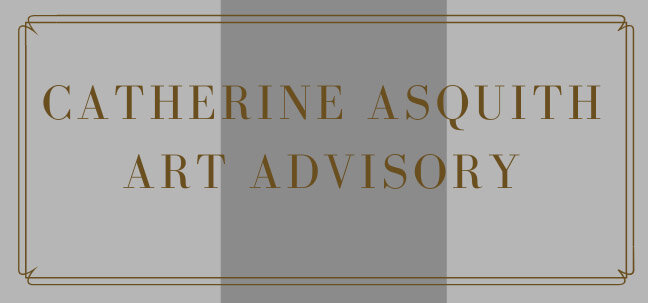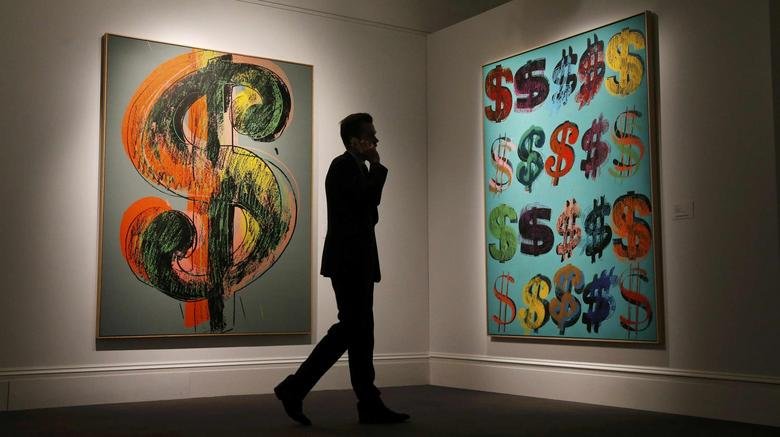Recently I was contacted by The Age journalist Marta Pascual Juanola for a story she was currently working on about the Australian art market and how “some actors linked to organised crime insert themselves into legitimate trading.”
Pascual Juanolo was also hoping to “get a better understanding of how the artwork trading in Australia works and how common it is for pieces to change hands privately [and also] about the importance of provenance and how people can ensure they know where a piece is actually coming from (things to look out for, what are some red flags etc.)”
As expected, my comments were edited down for the article, however, I thought it may be instructive to extend the context and employ the structure of questions posed to me by Pascual Juanolo, to consider if in fact there is a ‘black market’ present in Australia, how private trading typically operates, the potential risks, and the imperative of provenance, and professional guidance.
How prevalent is the trade of highly valued paintings in Australia between private individuals compared to gallery sales or auctions?
There is no readily available data on private or off-market transactions other than anecdotal.
From my own experience, private or off -market trading of high value works would equate with a small percentage of artworks sold in Australia, likely around 10%.
Within the Australian visual arts sector, I would suggest the commercial gallery sector sells more than the auction houses by volume, whereas, in terms of value, the auction house sales are probably higher in respect of dollar amounts.
Auction records are freely accessible, and we do know for example, that for last year, the auction houses in Australia sold a total of AU$60.31m. Unfortunately accessing a total value for the commercial gallery sector sales is more difficult because these values are not regularly reported or shared.
What is the most common form of private trade?
Generally, high value artworks by notable or market recognised artists, where the owner or buyer wishes for some discretion in the sale or acquisition of an artwork.
How are those trades most commonly organised?
Either a buyer or seller will approach a dealer or art advisor to manage the sale or acquisition of an artwork.
In Australia, these transactions are generally between private individuals, whereas international transactions can include a private or public museum, foundation or gallery, with the transaction being driven by the institution.
In the case of selling an artwork, the intermediary (art advisor / dealer / agent) will seek comprehensive information regarding the artwork including:
· description of the artwork: title, year produced, medium, dimensions
· provenance
· supporting documentation, Certificate of Authenticity (esp. important for Aboriginal artworks to confirm ethical sourcing), purchase invoice, previous valuations and condition reports
· good quality jpeg images for initial consideration
· asking sale price
· access to artwork for private viewing
· inclusion in the catalogue raisonné (if applicable eg Brett Whiteley)
A similar process is undertaken when a request for an artwork is made. And a good intermediary will endeavour to really define the artwork request, to establish serious intent, on the part of the buyer. So, artist, period or series of artwork, dimensions, budget are all relevant factors in helping to determine the advisor’s approach.
I would suggest that there is an intermediary involved in either transaction – whether this be an advisor, dealer, auction house specialist or gallerist.
What are some of the risks associated with this type of trading as opposed to gallery sales, auctions or buying directly from artists?
I think to be fair, there are risks associated with buying and selling artworks from any platform; the important aspects are: reputation, credibility, level and duration of expertise, and position within the market.
However, in terms of private sales or acquisitions, and without the professional guidance of an intermediary, potential risks could be:
· buying above the market value
· selling below the market value
· buying or selling at the wrong time; there are favourable seasons for both
· buying a problematic work, i.e provenance or lack thereof will curtail re-sale value or potential
· buying the ‘’wrong’ work by an artist, i.e. from the lesser series or period ; again impacting resale value in the future
· solely relying on jpeg images without professional support
· shoddy due diligence and/or lack of supporting documentation
· unknown or undocumented condition
· limited access to the artwork for viewing until certain point in the negotiations
Some of the above can also relate to auction and gallery sales as well.
The big difference is the transparency of the markets – primary or gallery sales and secondary or auction sales are open to the public. Private sales are just that – private and off-market.
How important is it for prospective buyers to check the provenance of art?
Vital!
It is the pedigree of the artwork, and ideally should be traced back to the artist’s studio.
Checking provenance is a key component in the due diligence process and impacts not only the integrity of the artwork but its market value.
How can people ensure that the provenance being spruiked by sellers is accurate?
Research and market knowledge.
It’s a challenge to check provenance for the average person, unless they have access to auction house indices and records and extensive and in-depth knowledge of the art market.
Anything of high value or what you may consider high value should be given a second opinion, and therefore I would encourage people to consult an art advisor, for a due diligence report. Offsetting the fee against peace of mind is no-brainer in my view.
Get an intermediary involved.
Start with researching a reputable valuer or advisor. A referral from a trusted colleague or professional in your field would also be a good start.
If you are a collector and have spent time with gallerists and auction house specialists, you can also call upon their expertise in the matter or if it’s outside their area, ask for a referral.
Otherwise, if you have the time and inclination, you can research auction house catalogues and utilise one of the many art market portals and subscription-based price indexes to confirm provenance.
But even then, I would suggest, from experience, not every facet of provenance is always necessarily noted in an auction catalogue for example – whether this is an oversight or was not provided at the time of consignment – and similarly, not all subscription-based art market portals contain every update on an artist.
It’s really a case of cross-checking with multiple tools and resources and having knowledge of the market.
What are some of the red flags to look for when it comes down to trading art privately?
· Lack of or documentation confirming the agreement, an/ or in line with common practice.
· Provenance is not included in any documentation or is not forthcoming when requested
· An option to view the work is not provided
· Lack of transparency from the intermediary
· Limited access to the intermediary
· Discovery of work being offered to multiple prospects on multiple occasions– this is a big issue. – the work is “burnt” and it’s no longer private
· Difficulty in establishing clear legal title – this is problematic
· Work is not included in the catalogue raisonné and it should be
What are some of the vulnerabilities that might allow organised criminals and scammers to enter the legitimate art market?
There are vulnerabilities in many markets not just the art market. And on this occasion, I am certainly not going to provide any details which could enlighten or encourage “organised criminals and scammers”
What I will say is there is a common misnomer that the art market is unregulated – this is not entirely accurate. The art market does not have an overriding all-encompassing statutory governing body, but within its various sectors and sub-markets there are professional associations and organisations, codes of conduct, for example the Indigenous Art Code which sets standards of ethical behaviour for art dealers and galleries operating in Australia, and then of course, numerous guidelines and indeed legislation, for example, Australian Consumer Law in force in various jurisdictions, that can and does govern trade generally and is applicable to the art trade.
This is not the Wild West and you will be caught out if you do the wrong thing. We’re a small market and not much can transpire without being subject to some level of scrutiny.
How prevalent is the art black market in Australia?
I would suggest the so-called black market in art in Australia is nominal to non-existent. I don’t believe we have the depth of market to ‘harbour’, if you like, a criminal ‘trading’ element, and one which emulates that present in Europe.
Bear in mind with a black market to function as it where, you need very accessible trade routes in and out of a country – we are island located in the southern hemisphere.
©Catherine Asquith

